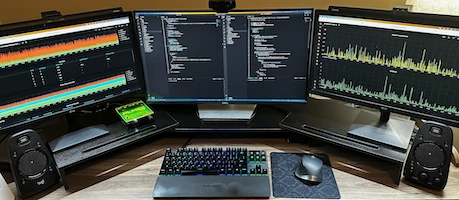Using RDS IAM authentication with DBeaver Community Edition (CE)
While DBeaver Professional has IAM authentication support out of the box. This post describes how you can accompish the same thing while using DBeaver CE.
MySQL
You need to install the AWS JDBC Driver for MySQL and the AWS SDK for Java (RDS) by doing the following:
-
Open
Driver Manager->Newand use the following settings:- Driver Name: AWS JDBC Driver for MySQL
- Class Name: software.aws.rds.jdbc.mysql.Driver
- URL Template: jdbc:mysql:aws://{host}:{port}
- Default Port: 3306

-
Click on the
Librariestab ->Add Artifactand paste in the following:<!-- replacing LATEST with specific version as required --> <dependencies> <dependency> <groupId>software.aws.rds</groupId> <artifactId>aws-mysql-jdbc</artifactId> <version>LATEST</version> </dependency> <dependency> <groupId>software.amazon.awssdk</groupId> <artifactId>rds</artifactId> <version>LATEST</version> </dependency> </dependencies> - Click
OKandClosethe Driver Manager - Continue below
PostgreSQL
You need to install the AWS JDBC Driver, the AWS SDK for Java (RDS) and the PostgreSQL JDBC Driver by doing the following:
-
Open
Driver Manager->Newand use the following settings:- Driver Name: AWS JDBC Driver for PostgreSQL
- Class Name: software.amazon.jdbc.Driver
- URL Template: jdbc:aws-wrapper:postgresql://{host}:{port}/{database}
- Default Port: 5432

-
Click on the
Librariestab ->Add Artifactand paste in the following:<!-- replacing LATEST with specific version as required --> <dependencies> <dependency> <groupId>software.amazon.awssdk</groupId> <artifactId>rds</artifactId> <version>LATEST</version> </dependency> <dependency> <groupId>software.amazon.jdbc</groupId> <artifactId>aws-advanced-jdbc-wrapper</artifactId> <version>LATEST</version> </dependency> <dependency> <groupId>org.postgresql</groupId> <artifactId>postgresql</artifactId> <version>LATEST</version> </dependency> </dependencies> - Click
OKandClosethe Driver Manager - Continue below
Using the driver
-
Completely exit DBeaver and re-open it from your terminal window. This is needed so it loads your
AWS_PROFILEenvironment variable. You will need to remember to open DBeaver this way going forward to use the IAM credentials or find another way to load the environment variable on startup. On macOS, I open the terminal and type the following to open DBeaver. Set the profile name to be whatever your AWS profile is called, that has RDS IAM access.AWS_PROFILE="my profile" open /Applications/DBeaver.app - Add a New Database Connection and use
AWS JDBC Driver for MySQLorAWS JDBC Driver for PostgreSQLas the driver -
For MySQL: Click on the
Driver propertiestab, scroll down touseAwsIamand set it totrue
-
For PostgreSQL: Click on the
Driver propertiestab, setwrapperPluginstoiam
- Enter your DB connection details in the
Maintab- Use your database username, that was configured to use IAM auth, and leave the password field blank
- Click
Test Connectionand it should connect and authenticate to your RDS database


Comments